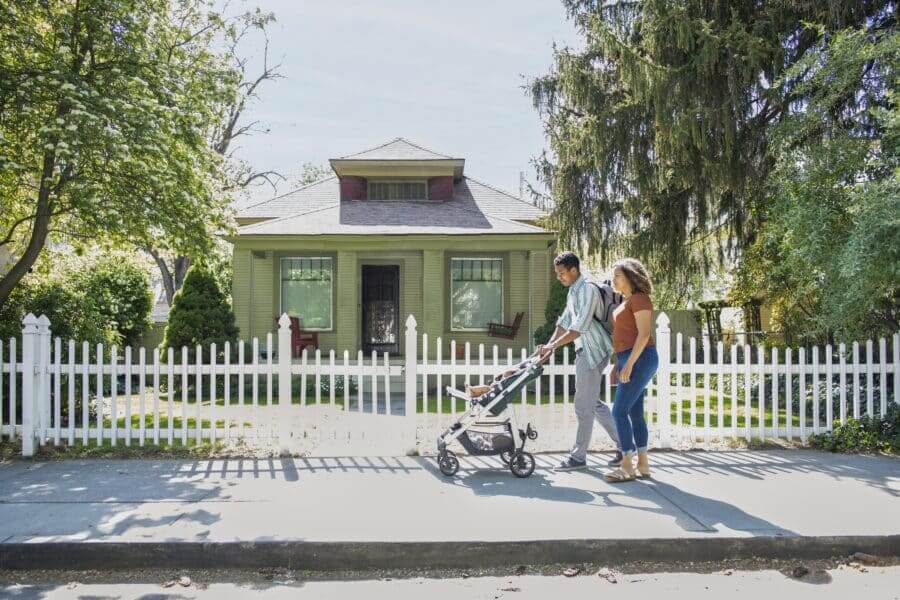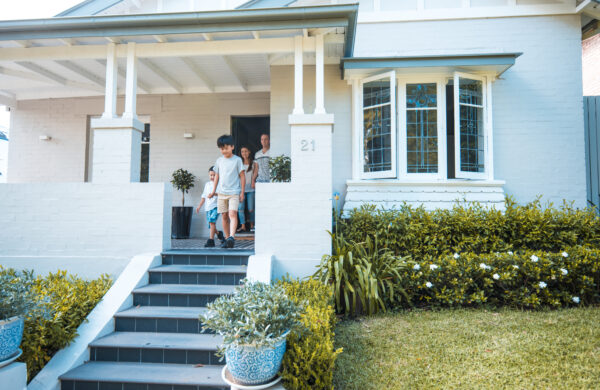Some homeowners may never have an insurance claim. But the odds suggest a different outcome. So it’s essential to have the right coverages in place. According to the Insurance Information Institute, about one in 20 homes has a claim against its home insurance policy each year.
Viewed another way, homeowners can expect a claim once every 20 years, on average. Could you have a claim this year? There’s no way to know. The insurance choices you make today could protect you as soon as this afternoon, or you might be fortunate enough to avoid a loss for decades.
The wisest choice is to prepare with the right coverages, and today’s policies offer more ways to personalize your protection. A trusted insurance professional can guide you through your options.
Customizing Coverage for Your Home
We often think of home insurance as protection for the home itself. And that’s accurate. Fire and lightning claims are the most costly, on average, with wind and hail claims being the most frequent type of claims.
But home insurance protects much more than just your house. For many households, the best strategy is to bolster home insurance coverage with customized options or expand protection with a package that addresses wider risks.
With the right coverage choices, you can protect not just your home, but also your belongings and even your lifestyle.
Coverages for Specific Risks
Think of a standard home insurance policy as a foundation. From a strong foundation, you can build up and out, customizing your coverage to suit your needs and priorities.
You may not need coverage for every situation, and if insurance covered everything, a policy would be unaffordable for most families.
Instead, you can personalize your protection to cover the risks specific to your lifestyle. The categories below all represent risks for which a standard home policy may only provide limited coverage (or no coverage at all).
Fortunately, you have options. An experienced insurance professional can help pinpoint potential concerns and recommend solutions to build an insurance package suited to your unique needs.
Jewelry and Valuables
The average cost of a diamond wedding ring approaches $6,000. However, a standard home insurance policy often limits jewelry coverage to $1,500 and limits claims to specific risks called “named perils.”
In addition, standard coverage for jewelry often comes with a $1,000 deductible.
Doing the math, a covered loss for a $6,000 ring could result in a $1,500 claim payout.
If you have valuables, consider getting a personal articles floater. With this type of add-on, you can protect specific items for their full value and enjoy protection against a wider range of risks.
Umbrella Personal Liability Insurance
Personal liability is among the largest potential losses for homeowners. Most home insurance policies offer a base coverage of $100,000 for personal liability due to accidental injuries caused to others or accidental damage to the property of others.
While personal liability claims average just over $20,000, it isn’t uncommon to see losses at well over $100,000. Accidents happen. To play it safe, the base coverage may not be enough.
You can expand your coverage to a higher limit, but the wisest strategy may be to supplement your base policy with an umbrella policy.
An umbrella insurance policy increases your personal liability limit affordably while also expanding your coverage to protect against risks such as libel and slander.
Your umbrella coverage protects you both at home and away, and it can even extend the coverage limits for your auto policy.
Flood Insurance
Average losses for homeowners due to flooding often approach six figures for major weather events. The bad news: standard home insurance policies don’t cover floods.
If you live in a flood-prone area, a standalone flood policy can buttress your protection, safeguarding your home and belongings against one of nature’s most common risks.
The National Flood Insurance Program (NFIP) writes most existing flood policies. However, a growing number of private market providers now service many areas, giving homeowners more options.
Insurance for Boats and Recreational Vehicles
Your home insurance policy can cover your boat, but a closer inspection shows some potentially costly gaps in coverage. For example, home insurers may limit liability coverage to boats below a certain horsepower or size.
You’ll also find a coverage gap for jet skis. A standard policy won’t provide coverage.
Instead, you can consider a dedicated boat policy or personal watercraft policy.
Similarly, recreational vehicles typically aren’t covered by a standard home policy. If you own a boat, jet ski or recreational vehicles like ATVs or UTVs, discuss your coverage needs with a trusted insurance professional.
Earthquake and Sinkhole Coverage
A standard home policy covers most risks, but you’ll find gaps in certain risk categories. As an example, standard policies don’t cover losses due to earth movement.
In some parts of the country, earthquakes are a common occurrence. In other areas, sinkholes may be a bigger concern.
A dedicated policy for earthquakes or sinkholes can offer protection if you’re in an area where there’s a higher risk of damage due to earth movement.
Coverage for Business Activities
Home businesses are more common than ever, and working from home has become a popular alternative to commuting. However, a personal home insurance policy won’t cover many business-related risks.
You may not need a full business insurance policy, although that’s sometimes the best solution. In some cases, you may be able to add a rider to your policy that addresses certain home-business risks.
Business coverage can be complex, or the solution might be simple. It’s always best to discuss your options with an insurance professional.
Additional Risks and Coverage Options
Home insurance packages and policies offer countless ways to personalize your protection. In some cases, you can just add a rider to offer better protection. In other cases, you may need an additional policy. In a third scenario, an add-on can help your coverage expand as needed.
Here are some examples.
- Water backup coverage: A standard policy won’t cover damage due to sewer or drain backups. However, you can often add coverage to your policy as a rider.
- Extended reconstruction costs: Following widespread weather events, repair and reconstruction costs can spike, possibly exceeding your home’s coverage limit. Consider adding extended or guaranteed replacement cost coverage to your policy to make your home’s coverage more flexible.
- Coverage for vehicles: Home insurance policies don’t cover vehicles. For cars and trucks, the solution is simple because a well-designed auto insurance policy provides protection. However, the lines can get blurry for electric bikes or similar transportation devices. Discuss your coverage needs with a pro.
Review Your Coverage Options With an Insurance Professional
A home insurance policy acts as base coverage, from which you can expand with customized options that consider your needs and priorities. An experienced insurance professional can help you navigate your choices and spotlight risks you may not have immediately recognized.
By choosing only the options you need, you can safeguard your home and family while still staying within your budget.
Better protection for your home and lifestyle may be more affordable than you expect. Talk with one of our home insurance specialists today.






